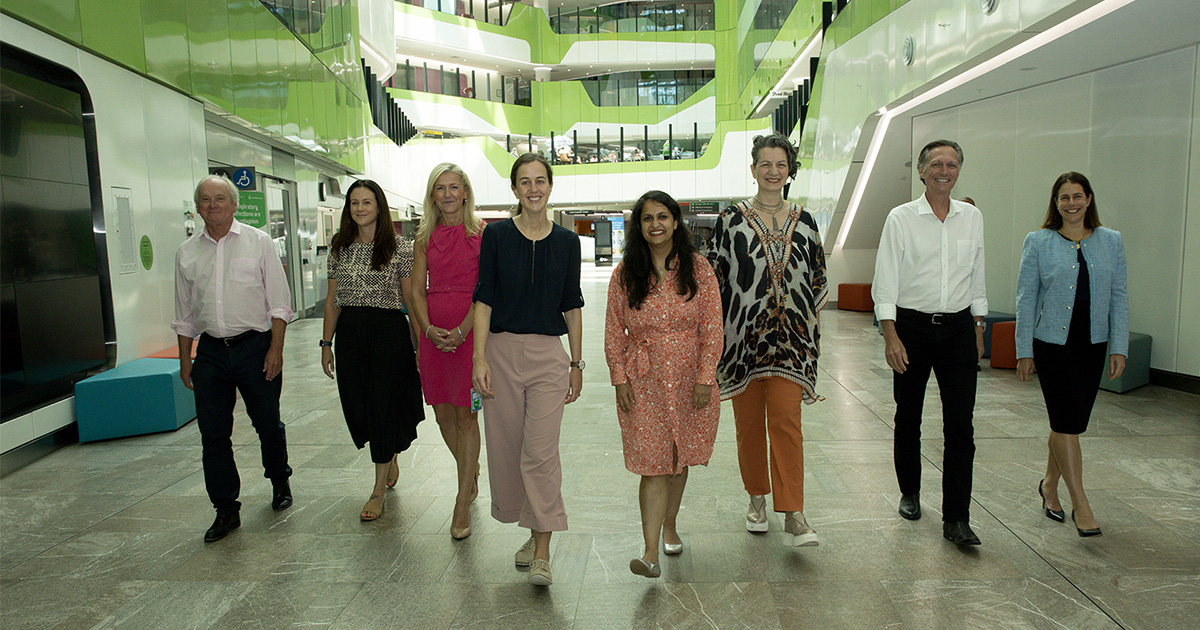Search

News & Events
PhD pathway program ensuring bright future for clinical research in WATwo outstanding Perth Children’s Hospital clinicians will be supported to pursue a career in medical research, paving the way for more clinician-scientists in Western Australia.
Research
Associations between sun exposure, skin pH, and epidermal permeability in pregnancy: A longitudinal observational studyLittle is known about how sun exposure may affect the maternal skin barrier during pregnancy when many hormonal and physiological changes occur. In this longitudinal observational study, 50 pregnant women were recruited at 18-24 weeks' gestation, 25 in summer-autumn, and 25 in winter-spring. At three time points in pregnancy at 18-24, 28-30, and 36-38 weeks' gestation, participants completed a validated sun exposure questionnaire and had skin permeability and surface pH measured on the volar forearm.
Research
Hypoglycaemia in DiabetesIatrogenic hypoglycaemia is one of the main limiting factors in the glycaemic management of diabetes. It causes negative biological, psychological, and social consequences in most people with type 1 diabetes and in many with advanced type 2 diabetes. This chapter explores physiological homeostatic mechanisms that prevent hypoglycaemia through glucose counter-regulation, before discussing specific acquired defects of glucose counter-regulation in diabetes, which provides an insight into risk factors for hypoglycaemia.
Research
Environmental Determinants of Islet Autoimmunity (ENDIA) longitudinal prospective pregnancy to childhood cohort study of Australian children at risk of type 1 diabetes: parental demographics and birth informationThe Environmental Determinants of Islet Autoimmunity Study is an ongoing Australian prospective cohort study investigating how modifiable prenatal and early-life exposures drive the development of islet autoimmunity and type 1 diabetes in children. In this profile, we describe the cohort's parental demographics, maternal and neonatal outcomes and human leukocyte antigen genotypes.
Research
Load-velocity relationships and predicted maximal strength: A systematic review of the validity and reliability of current methodsMaximal strength can be predicted from the load-velocity relationship, although it is important to understand methodological approaches which ensure the validity and reliability of these strength predictions.
Research
Effects of Dietary Fat and Protein on Glucoregulatory Hormones in Adolescents and Young Adults With Type 1 DiabetesDietary fat and protein impact postprandial hyperglycemia in people with type 1 diabetes, but the underlying mechanisms are poorly understood. Glucoregulatory hormones are also known to modulate gastric emptying and may contribute to this effect.
Research
Cost-effectiveness analysis of routine screening using massively parallel sequencing for maturity-onset diabetes of the young in a pediatric diabetes cohortRoutine MPS screening for Maturity-onset diabetes of the young in the pediatric population with diabetes could reduce health system costs and improve patient QoL
Research
The use of continuous glucose monitoring with remote monitoring improves psychosocial measures in parents of children with type 1 diabetes: A randomized crossover trialCGM with remote monitoring was found to improve multiple measures of quality of life, reduce family stress, and improve parental sleep
Research
ApoB48-remnant lipoproteins are associated with increased cardiometabolic risk in adolescentsPlasma apoB48 remnant lipoproteins associate with cardiometabolic risk factors in adolescents and provide support for the screening of remnant cholesterol in youth
Research
Concurrent developmental course of sleep problems and emotional/behavioral problems in childhood and adolescence as reflected by the dysregulation profileFindings provide evidence for a strong association in the development of sleep problems and difficulties of dysregulation with emotion, cognition, and aggression
